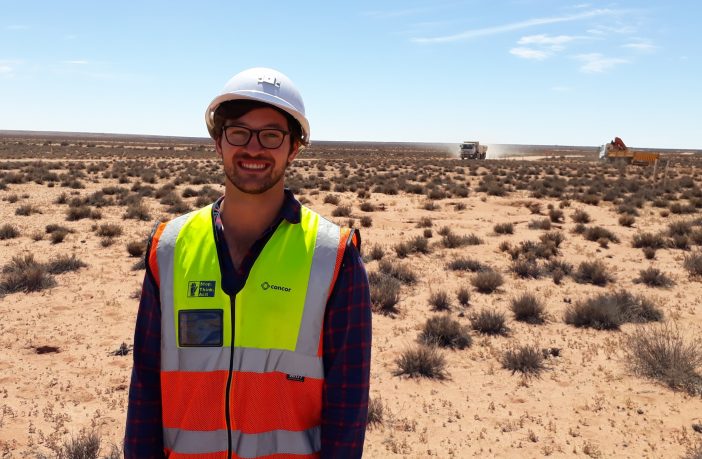- Water is the life force of the construction processes at the Kangnas Wind Farm site.
- Weekly water-usage monitoring is done to ensure that the project remains within the licence stipulations.
- New wind, solar PV in South Africa delivers the least water consumption, lowest carbon emissions and the most jobs.
- Once operational, Kangnas Wind Farm will deliver 140MW of clean renewable power from its sixty-one, 115m-high, wind turbines.
Wind energy does not require water for its generation, however, it does need a moderate amount during the construction phase. Despite it being a relatively negligible amount, the conservation of this rare resource, especially as Kangnas Wind Farm is situated within Namaqualand, is managed by the onsite Environmental Officer.
Due to the importance of water, its conservation and sustainability is Marnu Gouws’s number one priority, “In my opinion, water is one of the most important factors currently on the Kangnas Wind Farm project site, as it’s the life force of the construction processes,” explains Marnu Gouws, Environmental Officer at Kangnas Wind Farm.
Weekly water-usage monitoring is done to ensure that the project remains within the licence stipulations, as provided by the Department of Water and Sanitation. Furthermore, the static water level of the borehole is measured weekly to make sure that the borehole water level isn’t over utilized. Should the level drop, water extraction is halted immediately.
In addition to this, PH and Electric Conductivity tests are done to determine the water quality. Findings are reported to the Department of Water and Sanitation quarterly, as well as providing water samples to the laboratories, bi-annually.
The CSIR and other research institutes have conclusively demonstrated that the option of new wind, solar PV in South Africa delivers the least water consumption, lowest carbon emissions and the most jobs.
Kangnas Wind Farm is situated in the Nama Khoi Municipal area, in the Northern Cape. This Province is home to more than half the country’s 112 independent power producers (IPP), with more than 19 projects already connected to the grid with capacity of 900MW. The Northern Cape is the recipient of the majority of IPP’s from the latest bid window, green lighted in April this year, which will bring 15 new wind, solar PV and CSP projects to the Province.
Once operational, Kangnas Wind Farm will deliver 140MW of clean renewable power from its sixty-one, 115m-high, wind turbines. It will have the capacity to generate around 563 500 MWh of clean renewable energy per year and is expected to supply electricity to power up to 120 000 South African homes.
Kangnas Wind Farm is expected to eliminate approximately 550,000 tonnes of carbon emissions each year when compared to traditional fossil fuel power plants. In addition to zero carbon emissions and reduced use of fossil fuels, the country will benefit from almost zero water consumption that is required during the generation process.
Author: Bryan Groenendaal
Source: TM Communications















